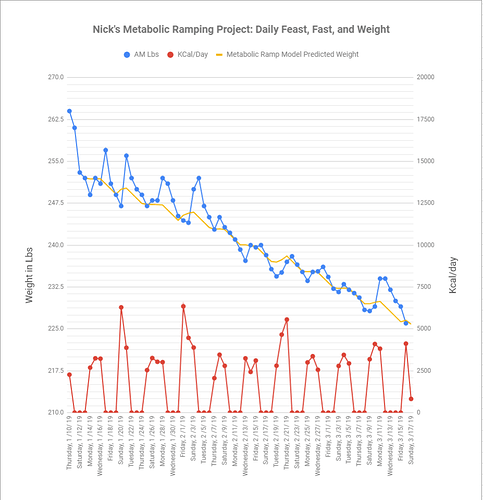Day 17… that’s more than 1.5x my previous longest fast. No hunger this morning so back to my usual satiated state. No muscle soreness from my lifting yesterday either which is a little disconcerting. No soreness = no hypertrophy in my book.
I can’t deny that I worked out well and it felt great and even that I pushed my weights and reps. Great pump too… but no soreness.
Weight went down as expected but not in a way I like… 169.6 lbs total and 135.7lbs lean. So lost 2lbs since yesterday with 1.1lbs fat and 0.9lbs lean so back to 20% bf. Compared to 4 days ago (Saturday), prior to the Leucine, at 170lbs totals and 136lbs lean, I’m back where I started total but lost 0.3lbs lean and 0.1lbs fat (net since Saturday).
Not sure what to make of it yet… work stress did reach a peak yesterday but can’t quantify the physiological effect. My fasted calmness is high but I have to contend with more travel in my future. Thankfully, fasting can only help with that 
So approaching this analytically… 4 days fasting requires 4 x 2700cal ~ 10,800cal. The possible extremes here are all protein or all fat.
All fat ~ 1200g ~ 2.6lbs fat
All protein ~ 2700g ~ 6lbs protein
That’s not assuming the extra exertion from weightlifting.
Assuming I use day 2 of the fast to compensate for the potential rehydration effects of the Leucine ~ +2.1lbs of fat and +1.3lbs of lean in water.
So, the starting hydrated position was 173.4 = 137.3 lean + 36.1 fat. The end position was 169.6 = 135.7 lean + 33.9 fat. So the total loss over the four days (assuming same hydration) is -1.6 lean and -2.2 fat. That’s 3.8lbs.
Given that all lean loss would have been 6lbs and all fat loss would have been 2.6lbs, the ratio of lean to fat over that period is ~35% lean to 65% fat. That’s -3.8lbs. The ratios are flipped but I’m assuming that total hydration is the same, not that the hydration of lean and fat stay the same.
So what does that mean? My interpretation is that I’m still losing lean and fat at the same rate as I was, maybe a bit less lean but I need more data to validate. I also believe that the curves will continue to decline again with slightly adjusted slopes. So why does it look like I lost more lean vs. fat over these 4 days? I think it’s that the rehydration of muscle and fat is different with Leucine than the original state when fed. So it’s still water redistribution I’m experiencing more water retention in fat (making it look like I’m losing more lean).
I still believe that my fat cells are holding on to water in expectation that fat is inbound and it will need those cells for storage again. I just need to be patient and let it cross over to the next threshold. I do expect a flush to correct this … eventually 
After all the analytics… it’s still about being patient and letting the body do it’s thing.
Day 17… woohoo!

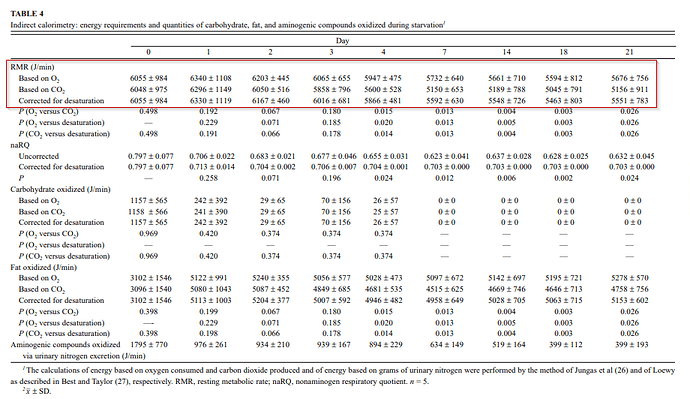
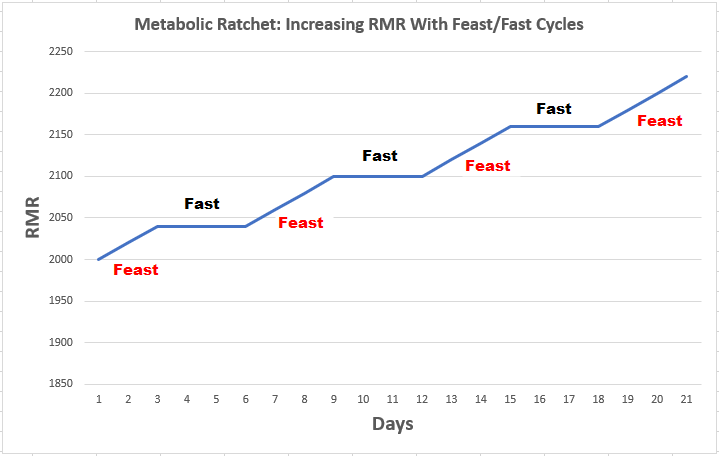


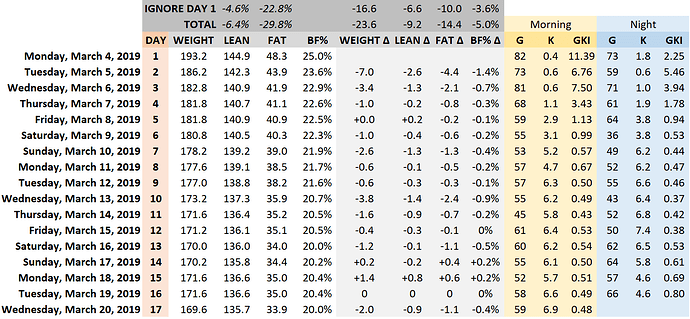
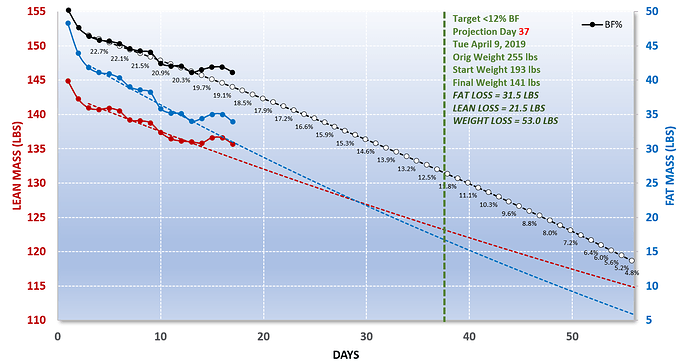
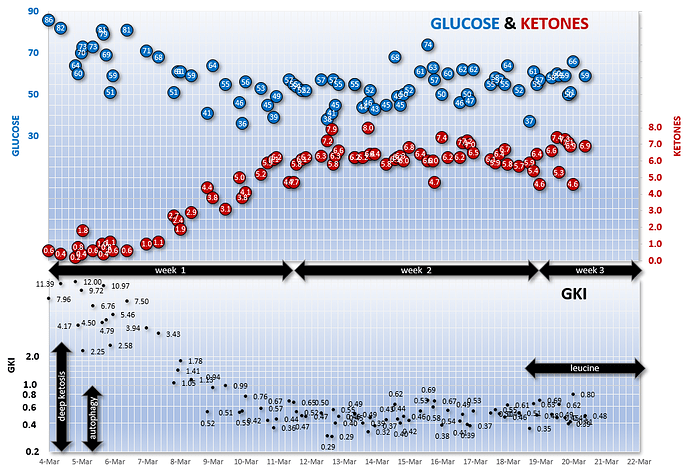
 Zauner studied fasts of 4 days and found that the RMR increased. So have others. In general, though I do think that shorter is better, so I agree with Phinney on that.
Zauner studied fasts of 4 days and found that the RMR increased. So have others. In general, though I do think that shorter is better, so I agree with Phinney on that.